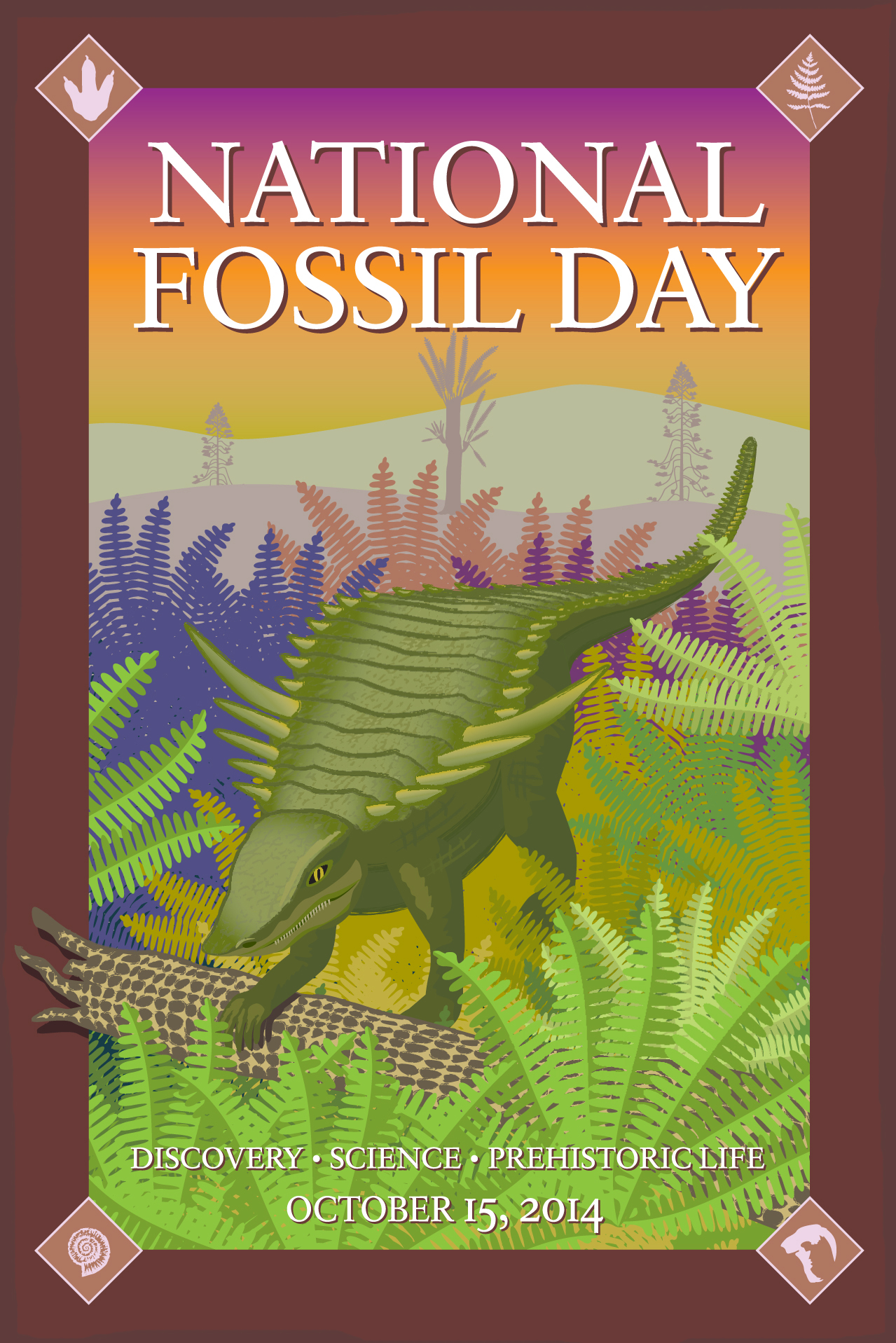The Smithsonian’s National Museum of Natural History Hosts the 2014 National Fossil Day Celebration in the Nation’s Capital
The fifth annual National Fossil Day celebration in Washington, D.C., will be held Oct. 15 at the Smithsonian’s National Museum of Natural History. More than 400 elementary school children will recite the “Junior Paleontologist Pledge” in the museum’s Rotunda.
Sant Director Kirk Johnson will preside over the ceremony and will be joined by Vincent Santucci, senior geologist and paleontologist from the National Park Service; Lucy Kuizon, retired senior paleontologist from the Bureau of Land Management; and Michael Fracasso, National Paleontology Program coordinator at the U.S. Forest Service.
“The Smithsonian and the National Park Service are critical stewards of our nation’s natural history heritage,” said Johnson. “For the first time, we have the privilege of hosting National Fossil Day entirely at the Museum of Natural History, and we look forward to sharing our excitement and knowledge about fossils with visitors here in the nation’s capital.”
National Fossil Day is an annual celebration organized by the National Park Service to promote public awareness and stewardship of fossils, with the goal of inspiring the next generation of paleontologists and fossil enthusiasts. On National Fossil Day, scientists and park rangers will share fossil discoveries at special events nationwide and explain the importance of preserving fossils for future generations.
Public programs at the museum’s education center, Q?rius, include:
- Sifting for Fossils – Take on the role of a paleontologist by searching through sand to find and identify marine fossils.
- Ask a Paleontologist – Talk with museum and U. S. Geological Survey scientists about their research and what it’s like to be a paleontologist.
- Fossil Illustration – Work with scientific illustrators to learn how to draw fossils and reconstruct ancient plants and animals using fossil evidence.
- Paleo Art: Fossil Rubbings – Become a scientific illustrator and make your own fossil rubbings of ancient trilobites, shells and plants to take home.
- Shark!! – Explore a variety of fossil shark teeth and learn more about the early history of sharks.
- FossiLab – Learn how specialists extract fossils from rock, sift microfossils from gravel and sand, and rebuild fossils found in many pieces.
- Explore the Q?rius Fossil Collection – Q?rius has hundreds of fossils that visitors can handle. From dinosaurs to trilobites, sharks, and ancient plants and insects, the Q? collection will take you around the world and through time.
The museum is home to the National Fossil Collection, which contains more than 40 million fossils that record the history of life on the planet over the last 3.5 billion years. Under the stewardship of one of the world’s preeminent teams of paleontologists and geologists, the collection features approximately 1,500 catalogued dinosaur specimens. Dinosaurs and other fossils are on display at the museum as part of a series of temporary exhibitions, including Last American Dinosaurs, which will open Nov. 25. The National Fossil Hall closed in spring 2014 and will reopen to the public in 2019 following the completion of the largest and most complex renovation in the museum’s history.
The National Park Service and the American Geosciences Institute are partnering to hold National Fossil Day across the country during Earth Science Week. Including the Smithsonian Institution and AGI, there are 12 key partners supporting National Fossil Day: Bureau of Land Management, Chesapeake Children’s Museum, Calvert Marine Museum, Dinosaur Park, Dinosaur Valley State Park, National Geographic Museum, National Science Foundation, U.S. Army Corps of Engineers, U.S. Forest Service and U.S. Geological Survey. Several of these partners will have additional fossil-related activities on-site at NMNH.
Fossils discovered on the nation's public lands preserve ancient life from all major eras of the Earth's history, representing nearly every group of plants and animals. In the national parks, fossils can range from primitive algae found high in the mountains of Glacier National Park, Mont., to the remains of ice-age animals buried in caves at Grand Canyon National Park, Ariz.
# # #
SI-505-2014
Randall Kremer
202-360-8770

